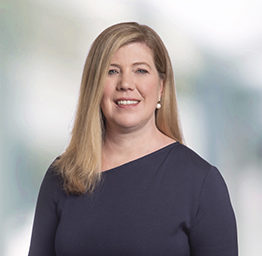Amid the pandemic, the national reckoning on race and the other challenges of the past year, employers across business sectors have been forced to sharpen their focus on building gender and race equity across their enterprises. And although employers have used a variety of strategies, including employee resource groups and improved communication, the urgency of the issue is universal.
That was the message from a recent Equity Across Industries panel discussion, part of WOMEN@WORK: 2021 Redefining the Workforce of the Future, a half-day virtual summit hosted by ADP on May 25. Moderated by ADP’s Isabel Espina, vice president, product development, WorkMarket, the virtual session featured women executives from four distinct industries: leisure and travel, technology, advertising and the federal government.
“Our leadership has really stepped up and continues to be involved in the workforce, and not just in the way that you would think, for example by sending messages or sponsoring employee resource groups,” said Natalie Pittore, chief of Enduring Security Framework at the National Security Agency. “They stepped up by ensuring that our training and every part of the culture within the NSA acknowledges and promotes inclusivity.”
The NSA has 11 employee resource groups, Pittore said, that help “inclusivity reverberate throughout the workforce. It says, ‘this opportunity is here for you.’”

Mari Marques-Thomas of Wyndham
Mari Marques-Thomas, vice president of Social Responsibility and Talent Development, Wyndham Hotels & Resorts, said that in the past, candid conversations about inclusion may not have reached inside corporate walls. But that’s changed with the dramatic events of the past year, including the pandemic as well as the murder of George Floyd and ensuing push for racial equity.
“I believe that is no longer the case,” she said. “We have leveraged our affinity business groups and our leaders—our CEO and the executive team—really have leaned in and encouraged continuously making enhancements to our diversity equity and inclusion strategy.”
Among other initiatives, Marques-Thomas said, the focus on driving higher levels of equity and inclusivity has involved several initiatives, for instance continuing to add to the company’s robust diversity equity and inclusion learning database–where the idea was to address racial inequality, anti-racism and boosting the company’s allyship work.
See also: Bersin-Why elevating equity is the challenge of the decade for HR

Kristin Winford, BDO
This work of allyship, which simply defined is the process of building relationships based on trust, consistency and accountability with marginalized or underrepresented individuals and/or groups, is critical to driving equity within the workforce, panelists agreed.
“You constantly have to listen and understand and make the necessary enhancements to your strategy and meet your talent where they are,” said Kristin Winford, executive director, Strategic Planning and Operational Excellence, at BDO in New York. At BDO, that has meant that executive committee members became executive sponsors of the company’s affinity business groups.
“It’s about being engaged and never underestimating your position of power in your workplace,” added panelist Susi Collins, Diversity, Equity and Inclusion (DEI) Leader at Amazon Web Services, which itself is dealing with the fallout of recent allegations of racial and gender discrimination. “You have a voice and we’re asking our people to speak up. If they see any inequities, they have the power and tools to address it and help us continue to build a culture where everyone feels like they belong.”